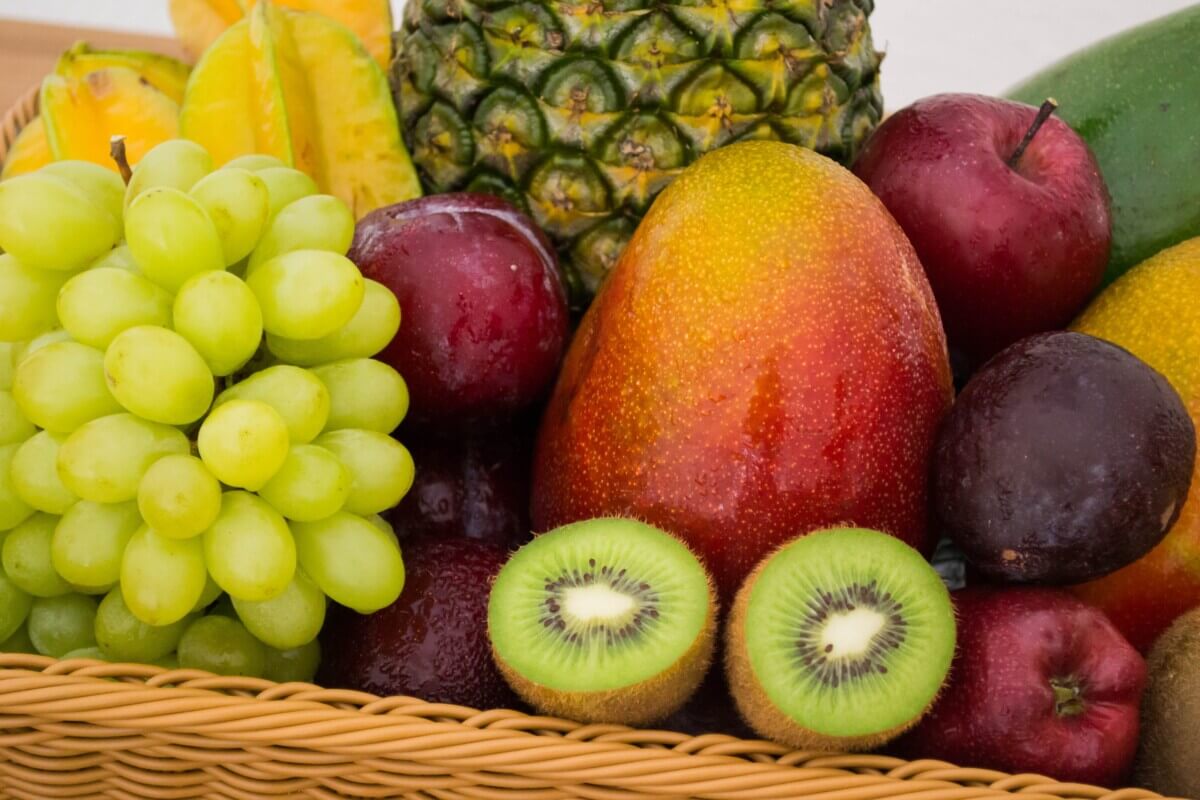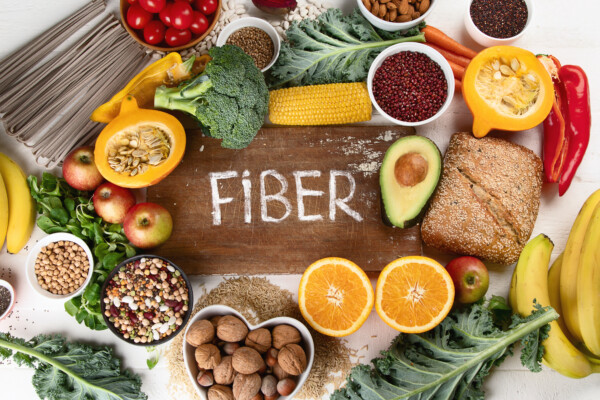
Foods containing fiber (© bit24 - stock.adobe.com)
Eating enough fiber is one of the single best things you can do for your health. At least 25 and 38 grams are the recommended daily amounts for women and men, respectively. However, most Americans aren't reaching this target, generally averaging around 16 grams per day or less.
What is fiber?
Fiber is a type of carb that is indigestible by the body. There are two types of fiber. One is soluble, which attracts water and becomes a gel to slow digestion and lower blood cholesterol as well as blood sugar. Insoluble fiber, on the other hand, does not dissolve in water and instead attracts water to the stool in order to make your trip to the bathroom a lot easier and less strenuous.
What are the benefits of eating enough fiber?
Fiber is well-known for helping to keep bathroom trips regular, but it does so much more. Sufficient fiber intake is known to:
- Help maintain proper cholesterol levels
- Regulate blood sugar
- Decrease the risk of colon cancer
- Decrease the risk of diabetes
- Manage the body's satiety signals (helping you to better understand your fullness cues)
- Support healthy weight loss and maintenance
The 3 best ways to incorporate fiber into your diet
1. Get creative with your vegetables
By now, we know that eating vegetables is probably something we should be doing every single day, for a lot of reasons. Non-starchy veggies like broccoli and carrots are great sources of powerful vitamins and minerals, as well as fiber. However, it's not always easy to make sure you have a side salad with every meal. This is why getting creative can really help.
Shredding zucchini, beets, carrots, and other veggies that don't have super strong flavors into things like ground beef before you make burger patties or meatballs can be a real game-changer. This way, you can make sure you have a lot more fiber in a meal than you probably would have had before. Another idea is to mix chickpeas into your tuna salad. The textures are surprisingly similar and go well together, while adding even more protein, fiber, and nutrients all at the same time. You can even blend cooked veggies into pasta sauce, which is a very kid-friendly way to increase veggie intake!
2. Choose fruit as snacks
Fruit is a fantastic source of electrolytes, vitamins, minerals, and natural carbs that are paired with fiber. The biggest thing that separates white sugar from fruit is the fact that fruit has fiber to help your body process the sugar and prevent blood sugar spikes. Eating fruit as a snack is a great way to get an extra few grams throughout your day outside of meals. The fiber in fruits helps to keep you fuller longer than any donut would — even more so when you pair a fruit with a fat and/or protein. Some examples are grapes and cheese or apples with peanut butter.

3. Don't peel everything!
There is so much valuable nutrition in the peels of fruits and veggies, specifically fiber that helps keep the bowels flowing. Peeling the skin can make a significant difference in how much fiber you are receiving. Peeling a kiwi can reduce the fiber content by as much as 50 percent! Think about this the next time you go to peel an apple or potato, too.
Bottom Line
Fiber is often an overlooked part of the diet, and very difficult to get through the standard American (or Western) diet that is high in processed white grains and low in whole vegetables, grains, fruits, and legumes. By making some dietary tweaks, you can easily up your fiber intake without even having to drastically change your diet. Any change will greatly help your body stay healthy.










